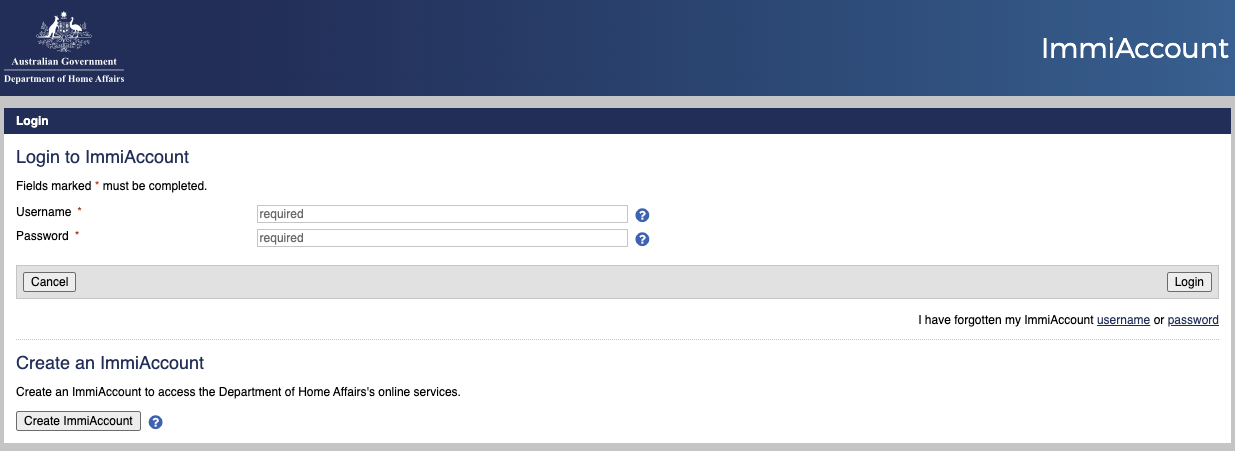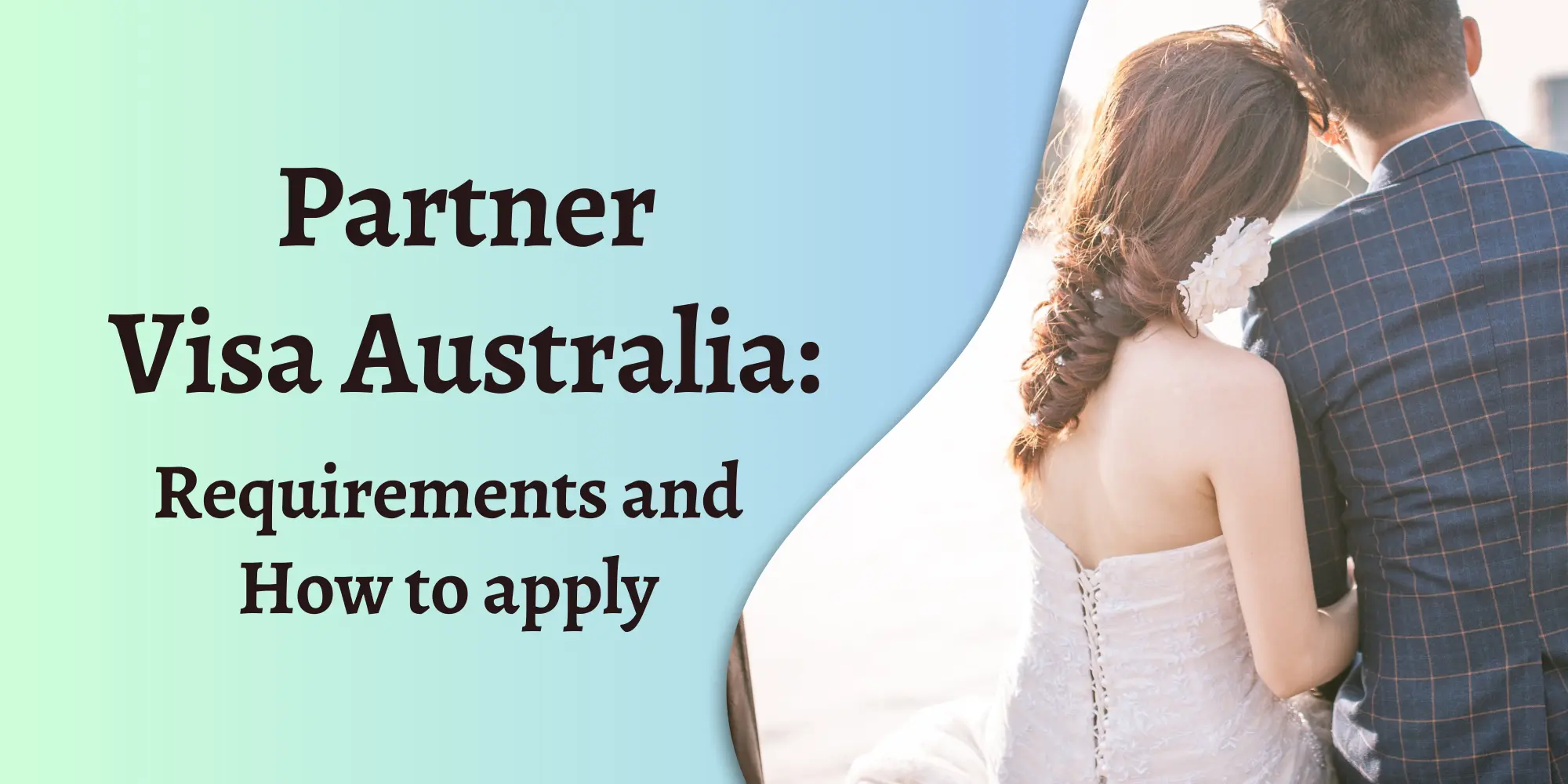Join your spouse or partner in Australia and build your life together with the Partner Visa in Australia. Begin your shared journey by learning the requirements and steps for applying.
The visa application for the partner visa typically comes in two stages:
- You are granted a temporary visa—either the 820 visa or visa 309 (depending on your situation)—while a decision is being made on your permanent partner visa.
- After 2 years of continuous relationship, you may be granted a permanent partner visa (801) or 100 visa.
There are cases wherein the temporary visa period may be waived or you’re granted the permanent partner visa in less than 2 years, for instance, if you’ve been in a relationship with your sponsor for 3 or more years. You can request this in your application.
Partner Visa Australia Requirements
To be able to apply for a Partner visa you must be either married to or in a de facto relationship with an Australian citizen, Australian permanent resident, or eligible New Zealand citizen at the time of applying.
For Married Applicants
A married applicant must meet the following conditions:
- Your marriage is valid under Australian law.
Generally, marriages outside of Australia are accepted if they’re recognised in the country in which they were solemnised.
- You’re not family-related.
Australian law prohibits marriage between individuals within a specific family relationship, specifically that between a parent and child, or between siblings (whether half- or full-blood).
- You have a mutual commitment with your spouse to the exclusion of all others.
Due to this requirement, polygamous marriages, even if recognised in other countries, are not acknowledged in Australia.
- Your relationship must be genuine and continuing.
- You either live together or do not live permanently apart.
For De Facto Partners
Being a de facto partner means you’re in a relationship where:
- You’re not married to each other.
- You have a mutual commitment to each other to the exclusion of all others.
- You have a relationship that is genuine and continuing.
- You’re cohabitating and aren’t permanently apart.
- You’re not family-related.
De facto relationships include both heterosexual and same-sex relationships.
To apply for a partner visa as a de facto partner, you usually need to have been in this relationship for at least 12 months. However, if there are compelling and compassionate circumstances, this requirement might be waived.
Subclass 820/801: Partner Visa Requirements
You must apply for the Subclass 820/801 Partner visa if you’re currently in Australia.
You’ll be granted the temporary 820 visa first, which allows you to legally stay in Australia until a decision is made on your Subclass 801 visa.
To be eligible, you must:
- Be inside Australia during the time of application
- Have a sponsor (spouse or de facto partner)
- Meet health and character requirements
- Must be 18 or older
- Not have any debt to the Australian Government
- Not have a history of visa cancellations or application refusals
Subclass 309/100: Partner Visa Requirements
The 309/100 Partner Visa is an offshore partner visa meant for overseas applicants who seek to join their spouse or partner in Australia.
Besides needing to be outside Australia when you apply, the requirements for this visa are mostly the same as the eligibility requirements for the 820/810 visa,
Once you’re granted the temporary 309 visa, you can immediately join your partner in Australia and legally stay there until a decision is made on your permanent partner visa 100.
Subclass 300 Prospective Marriage Visa Requirements
The subclass 300 visa lets you visit Australia to marry your loved one, who must be an Australian citizen, permanent resident, or eligible New Zealand citizen.
You must:
- apply for the visa before entering Australia
- marry within the validity period of your visa, which is between 9 and 15 months
Once married, you can apply for the 820/801 partner visa if you and your partner decide to settle in Australia
Partner Visa Checklist
Below are important points and critical documents to consider when you apply for your partner visa:
- Identity documents
- A birth certificate showing your parents’ names
- Passport,
- National ID, if applicable
- Proof of change of name, if applicable
- A police certificate issued within the last 12 months
- Statement detailing your relationship with your partner, including:
- how, when and where you first meet
- how the relationship developed
- key milestones, including when you moved in together, got engaged or married
- shared activities and interests
- time you spent apart
- significant events in your relationship
- your future plans
- Evidence of a genuine and ongoing relationship:
- Marriage or civil union certificate
- Your children’s birth certificates (if applicable)
- Shared financial obligations, such as joint bank statements, joint leases, and shared household bills (in both names),
- Household circumstances, such as your living situation and responsibilities to your children,
- Joint activities, such as travel records and photos, show your attendance together at social or cultural gatherings
- Social media messages and emails
- Statements from two witnesses of legal age who can describe your relationship (Form 888 – Supporting statement in relation to a Partner or Prospective Marriage visa application). Check out Form 888 Answers Examples here.
- Other relationship documents (if applicable), such as:
- Divorce or separation documents (if divorced or separated)
- Death certificates (if widowed)
- Compliance with eligibility requirements, including the following:
- You must be the spouse or de facto partner of an Australian citizen, permanent resident, or eligible New Zealand citizen.
- Your spouse, or de facto partner, must be your sponsor.
- You must meet health and character requirements.
- You must be 18 or older.
- You must not have any debt to the Australian government.
- You must not have had any visas cancelled or applications refused in the past.
Sponsor Requirements for Partner Visa
Your partner visa sponsor must be your spouse or de facto partner. They must meet the following eligibility requirements:
- Be an Australian citizen, permanent resident, or eligible New Zealand citizen
- Not have a substantial criminal record and/or been convicted of a relevant offence
- Be 18 years of age or older
- Be able to provide financial support for their partner
Below is a document checklist for your sponsor:
- Identity documents proving your partner is an Australian citizen, permanent resident, or eligible New Zealand citizen:
- copy of their passport
- copy of their birth certificate
- passport-sized photo of their face
- Documents showing they usually live in Australia:
- evidence of maintaining a home in Australia
- employment details
- properties or businesses owned
- family and other ties in Australia
- A police certificate issued within the last 12 months
- Sponsorship Form for a Partner to Migrate to Australia (via ImmiAccount)
They must use the transaction reference number (TRN) generated after you (i.e. the partner visa applicant) have filled out your application form.

How to Apply for Partner Visa
To apply for a partner visa in Australia:
- Complete the online application form.
- For you as the partner visa applicant: Form 47SP Application for migration to Australia by a partner
- For your sponsor: Form 40SP Sponsorship Form for a Partner to Migrate to Australia
- Attach all supporting documents.
- Pay the application fee.
- Lodge your partner visa application.
Partner Visa Processing Time
As of writing, these are the estimated processing times according to the Department of Home Affairs website:
| Visa subclass | 50% of applications processed in | 90% of applications processed in |
| Subclass 820: Partner visa (temporary) | 5 months | 33 months |
| Subclass 801: Partner visa (Permanent) | 9 months | 24 months |
| Subclass 309: Partner (Provisional) visa | 11 months | 24 months |
| Subclass 100: Partner (Migrant) visa | 12 months | 23 months |
| Subclass 300: Prospective Marriage visa | 10 months | 25 months |
Note that the timeframes are merely estimates, and there are no fixed timelines for visa approval.
To avoid unnecessary delays, make sure to accurately fill out your partner visa application form, attach all necessary documents, and respond quickly to any additional information requests.
How much does a partner visa cost in Australia?
The partner visa Australia fee depends on the specific subclass:
Subclass 820/801 partner visa
- main partner visa applicant: AUD 8,850
- additional charge for every person aged 18+: AUD 4,430
- additional charge for person under 18: AUD 2,215
Subclass 309/100 partner visa:
- main partner visa applicant: AUD 8,850
- additional charge for every person aged 18+: AUD 4,430
- additional charge for person under 18: AUD 2,215
Subclass 300 prospective visa:
- main partner visa applicant: AUD 8,850
- additional charge for every person aged 18+: AUD 4,430
- additional charge for person under 18: AUD 2,215
Note that the costs specified above don’t cover health and character checks, biometrics, or other visa expenses.
Process Your Partner Visa Hassle-Free
Your partner visa application can face delays—or even rejection—if details are overlooked or paperwork is missing.
With a decade of experience, KBA Global’s team of migration agents is here to assist you in managing your documents. We’ll keep you updated with any crucial changes that could affect your application.
Book a free consultation with one of our migration agents today!
Partner Visa FAQs
Can I stay in Australia while waiting for my temporary 820 visa approval?
Yes, you’re allowed to stay in Australia through the Bridging Visa A (BVA), which was automatically granted when you applied for the 820 visa. This means that when your current visa expires and there’s no decision yet on your 820 visa, BVA will take effect, allowing you to remain lawfully in Australia.
Note, however, that BVA does not allow multiple entries into Australia. So, if you plan to travel outside the country while your 820 visa is being processed, you must apply manually for a Bridging Visa B.
If you want to learn more about how bridging visas work, read our blog on What is a Briding Visa?
Does my sponsor need to be in Australia when they submit their sponsorship application?
No, your sponsor can be outside or inside Australia when they apply for sponsorship.
Can I work in Australia on a partner visa?
Yes, you can work in Australia on a partner visa, whether that’s a temporary partner visa, a permanent visa or a prospective marriage visa.
Aside from having work rights, you also enjoy the following benefits:
- pursue studies in Australia
- travel to and from Australia
- apply for Medicare (does not apply to subclass 300 partner visa)
Do I need to take an English language test to apply for a partner visa?
No, you don’t need an English language test.
Disclaimer: The above information is a general guide and not professional immigration advice. Be aware that immigration laws and regulations can change swiftly, potentially rendering some or all of the information outdated. Thus, before using the information above, we recommend checking the current laws with assistance from a migration agent or the Department of Home Affairs website.

